Yokote Apples into Craft Cider Made with Local Passion
Dec 06,2018
Yokote Apples into Craft Cider Made with Local Passion
Dec 06,2018
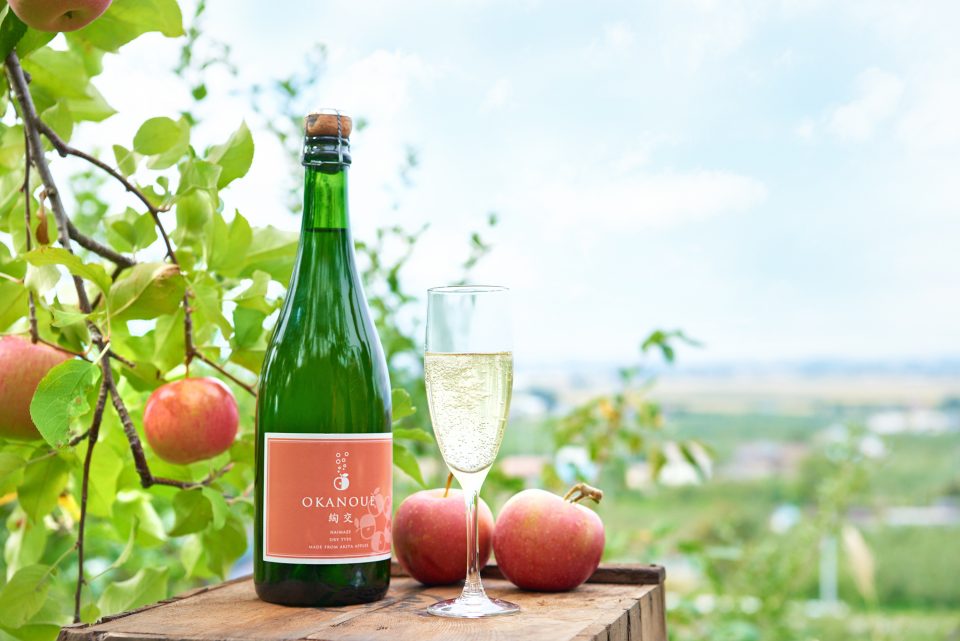

Are you aware that Akita is one of Japan’s leading apple-producing regions? And within Akita, the city of Yokote, which we visited for this article, is home to a particularly thriving apple industry. We passed numerous apple orchards as we traveled to our interview location.
The Okanoue Project, launched in 2015, is a new endeavor trying to produce hard cider in Yokote using locally grown apples. What led the founders of the project to try their hand at producing hard cider in Yokote, an area that has mainly focused on producing apples for fresh consumption? To answer this question and more, we spoke with the three founding members.
The Okanoue Project got off the ground in 2015 as a crowdfunding project. The founding members all ran very different businesses that they kept while working on the project.
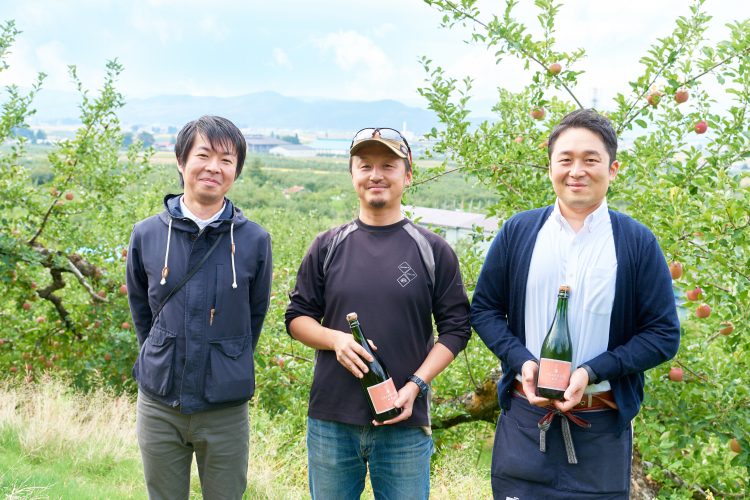
The founding members of the Okanoue Project. From the left, Sato Kentaro, Sato Kazuya, and Takahashi Tomohiro.
“Before I knew about cider’s existence, I had wanted to make wine, but my family owns an apple orchard, so that wasn’t in the cards. So I started thinking about making cider from the apples we grow, since they were readily available.” Relating the impetus for the project is Sato Kazuya, the fourth-generation owner of the Sato Fruit Farm in Yokote. Seven years would pass before he met his like-minded partners who joined him in bringing the project to life.
One of these individuals was Sato Kentaro. He runs a pharmacy called the Yamasa Pharmacy in Yokote’s Kaji area and seems like the last person you would expect to be involved in cider.
He gives his side of the project’s inception. “Before the project, I had created a community called Norakuko [Agricultural Social Club] as part of the pan-industry networking events I was promoting. The idea was to set up casual opportunities for local farmers and their consumers, like myself, to interact. That’s where I met Sato Kazuya. Because my work has nothing to do with agriculture, I found conversations about farmers and farming to be fascinating and novel. It inspired me to want to do something with them so we could broaden our horizons and grow together.”
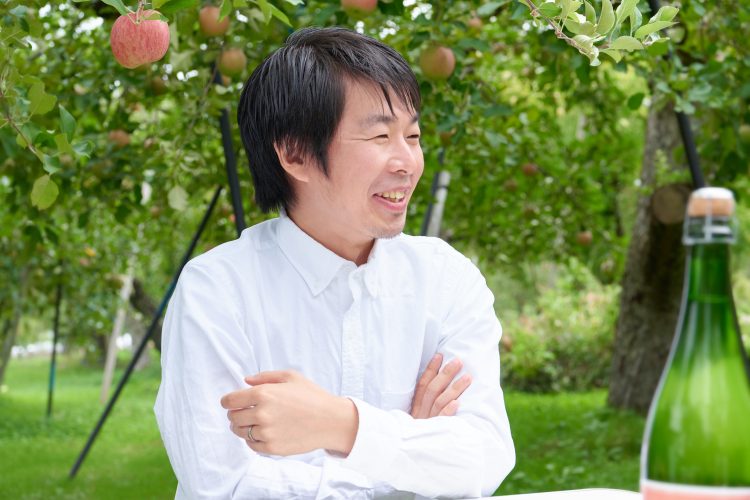
As they progressed with the concept of their cider-making project, they soon ran into a barrier.
Sato Kazuya explains. “I visited a brewer hoping to learn about cider brewing, but he turned me away, saying it was impossible unless I underwent formal education in brewing first. On second thought, I realized he was right, since studying on your own and making alcoholic beverages without a license is a violation of the Liquor Tax Act.
“Once we figured out that the hurdle to brewing cider was higher than we’d imagined, we decided to outsource production to a specialist brewer. Then, as we set about to find a liquor store, we were introduced to Takahashi Tomohiro.”
This is how Takahashi Tomohiro, who operates the Takatome Shuten liquor retailer in Yokote, joined the project. His inclusion marked the true start of the Okanoue Project. From the outset, the three all shared the common objective of contributing to Yokote and its community.
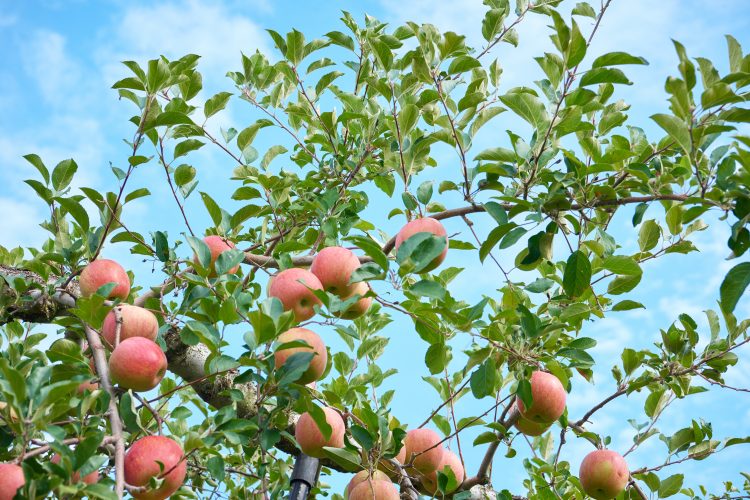
Yokote is located in Yokote Basin, the largest in Japan, surrounded by the Ou Mountains and the Dewa Mountains. It is an ideal area for agriculture because of the large temperature swings between day and night. For this reason, the area has been producing fruit, including apples, for over 140 years. The vast majority of Yokote’s apple production, however, has been for fresh consumption only. No real custom of apple processing had ever developed.
Sato Kazuya describes the situation. “To be frank, fresh apples have the highest profit margins. Compared to regions like Aomori and Nagano, the harvests are smaller here, and due to the amount of snowfall [Yokote, located inland, is in a heavy snowfall zone] and other climate issues, it’s necessary to prune the branches so high that you have to climb a ladder to pick the apples. This makes production very labor intensive. While the soil itself is well-suited for fruit tree cultivation and the land is blessed, processing harvested apples would require even more effort and cost.”
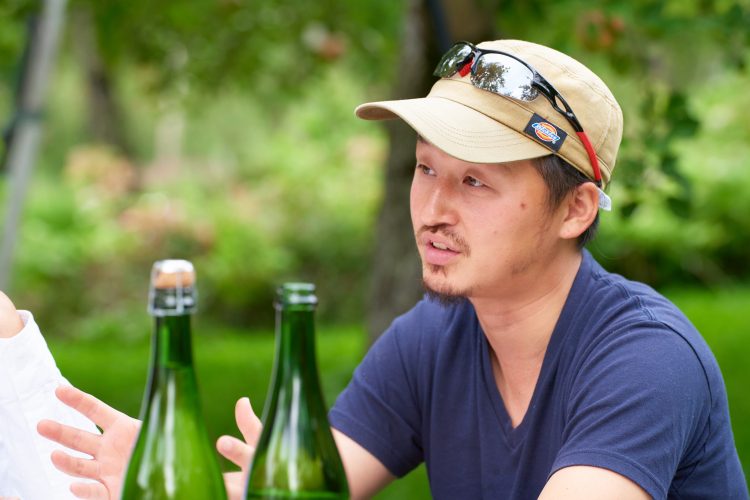
Sato Kentaro continues. “On the flipside, Yokote has long been a thriving center of alcohol production. Saké, of course, is one industry, but we also grow the most hops in the country, so we have partnered with major brewery groups. Riesling grapes from the Omori District are used in a local wine label called Omori Grape Wine. It’s odd that this place that has so many different alcoholic beverages and that has plenty of apples made almost no hard cider.”
Another factor playing into this might be the pride of long-standing, artisan-like producers who believe that Yokote apples are best fresh and that processing them would be a waste.
Sato Kazuya adds. “Even today, there are many farmers with that artisan mindset. This is precisely why we want to make hard cider that preserves the quality and taste of apples grown here and first create cider-loving supporters in the local community.”
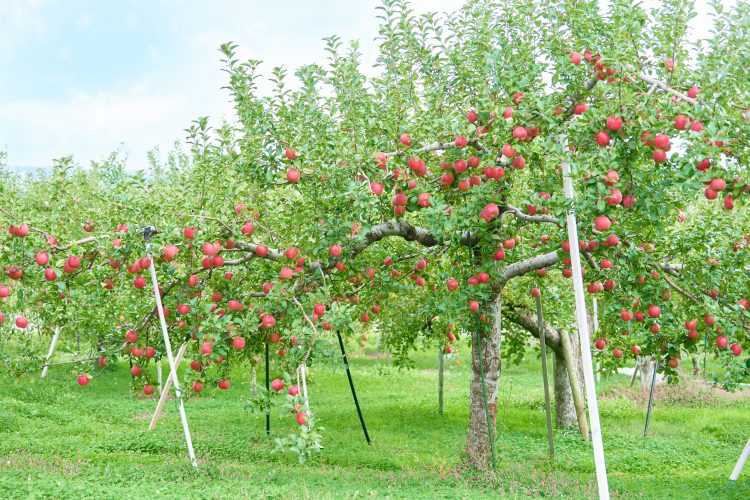
What was very surprising to us was that none of the founders had any knowledge of hard cider, or even a particular interest in it, before starting the project.
Sato Kentaro speaks about their inexperience. “It wasn’t until I started drinking hard cider regularly that I realized the tastes of various ciders are completely different from one another. With saké or beer or wine, there’s a general shared understanding of what different categories taste like. But there is no such thing with hard cider. Even now, I’ll try something and be taken aback — like, ‘Is this cider too?’ Of course, that’s part of what makes it so compelling.
“Another plus is that because hard cider is not yet that well known in Japan, there aren’t any pretentious connoisseurs like there are with saké or wine. (laughs) You can imagine how know-it-alls can be a pain to beginners. (laughs)”
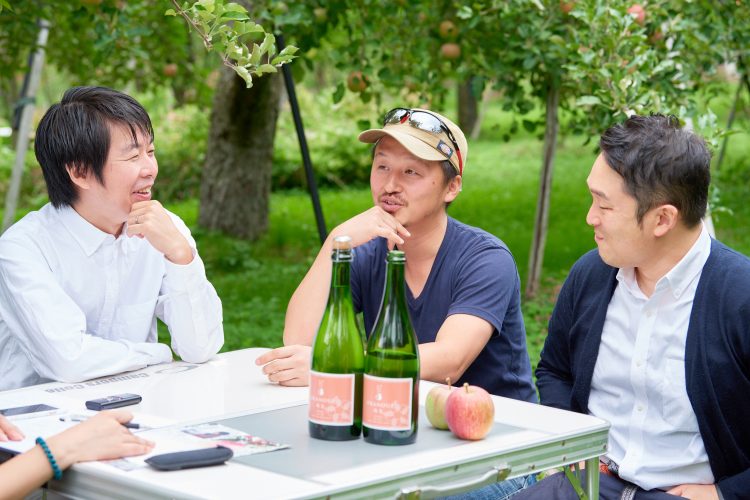
Sato Kazuya continues. “In the early going, we didn’t know what style of cider we were aiming for. This made it difficult to explain what we wanted to the brewers that we commissioned. There are challenges that come with outsourcing production, but now I’ve come to find those challenges interesting. That’s because each brewer has their own idiosyncrasies, and I enjoy learning those differences each time we work with a new brewer.”
Looking at it from the other way around, however, is Sato Kazuya saying that the Okanoue Project’s hard cider doesn’t yet have a defined taste?
Takahashi Tomohiro replies. “You can interpret it like that. But we make it clear to our brewers that we want to preserve the characteristics and flavor of the apples grown in this area. As long as that’s understood, I think the taste itself can be a bit like a chameleon. You could say the taste is like a once-in-a-lifetime experience.” (laughs)
“Personally, what I want to get across the most is that cider’s wide variety of flavors is itself really interesting,” adds Sato Kazuya. The hard cider produced by the Okanoue Project, which is using more and more commissioned brewers, offers a chance to experience a different taste every time.
The Sato Fruit Farm currently grows around 10 varieties of apples, and the kinds used to make hard cider vary with each batch.
Sato Kentaro explains. “We also want to emphasize the story behind each batch, such as when the apples were harvested and what variety they are. While we aim to create standard products and increase production volumes, the challenge lies in the limited time we can dedicate to the Okanoue Project, as each of us has our own primary business to look after.”
Despite the challenges and concerns, the three members share the same direction. As the project enters its third year, its future prospects seem to be expanding.
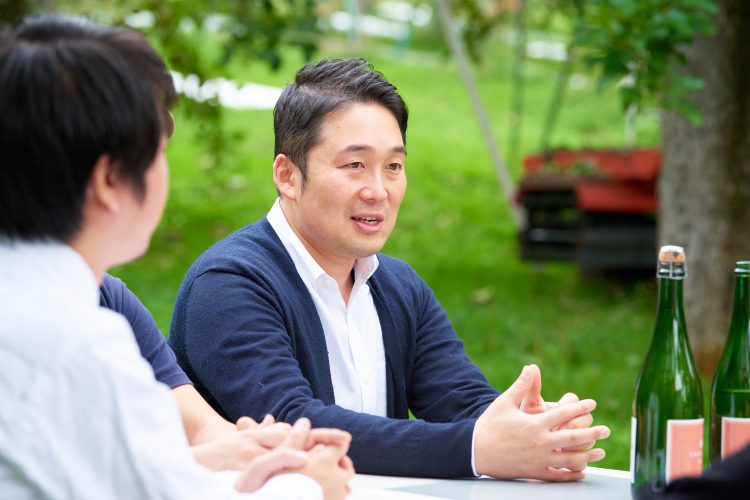
Takahashi Tomohiro speaks up. “We are starting to be recognized, bit by bit, in this area. But since we began this project with the objective of contributing to the local community, our first and strongest desire is to be accepted and loved by the community here. We also want to work with people who share our vision. So rather than aggressively expanding distribution, we think a more organic, gradual approach — like an amoeba slowly forming connections — is the better fit for us.
“Another goal is to build our own brewery at some point. Ultimately, we would be delighted if our generation can do something interesting that revitalizes our region and stems the flow of people leaving the farming profession.”
Sato Kentaro adds. “We are in the midst of gradually fostering collaborations with companies and people in other industries who are interested in our project. We really hope we can widen our network with other people in this way.”
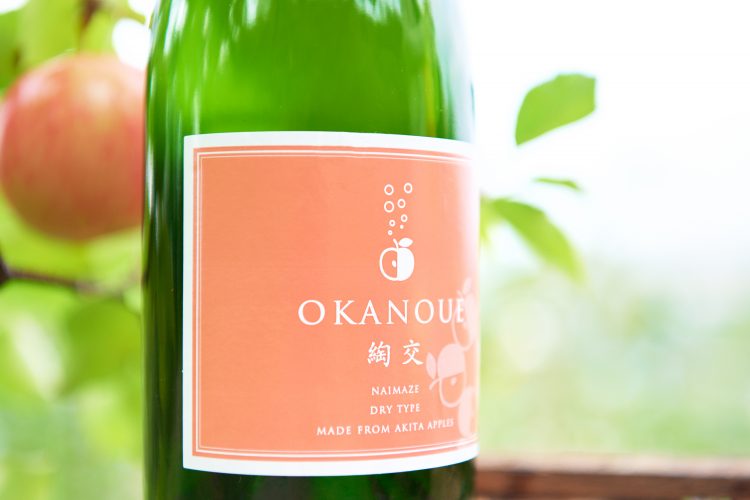
The project’s name, Okanoue [which literally means “On the Hills”], was inspired by the terrain of apple orchards common in Akita, including the Sato Fruit Farm. The taste of the hard cider was truly special as we drank it while picturing those scenes, burned into our memories, of apple trees growing as far as the eye can see atop the surrounding hills.
The hard cider photographed for this article is the project’s seventh release, named Naimaze (released in August 2018). It has a vibrant apple flavor with a subtle sweetness, reminiscent of sparkling wine. It was difficult to hold ourselves back from emptying glass after glass.